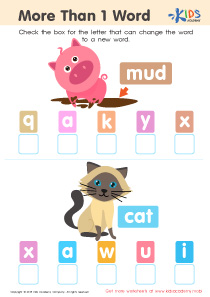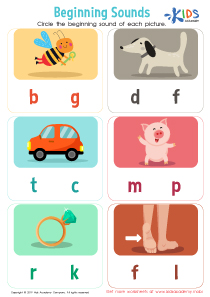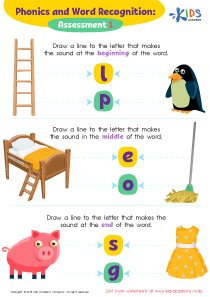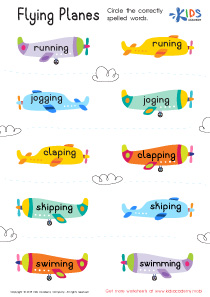Ending Sounds Worksheets for Ages 3-6
6 filtered results
-
From - To
Discover our engaging "Ending Sounds Worksheets for Ages 3-6" at Kids Academy! Designed to bolster phonics skills, these worksheets help young learners identify and match ending sounds to words, fostering essential literacy development. Through a variety of fun, interactive activities, children can easily grasp this crucial phonetic concept, preparing them for future reading success. Ideal for preschool to kindergarten, these printables provide a solid foundation in sound recognition, enhancing language abilities in an enjoyable way. Join us to make learning a joyous adventure with our expertly crafted ending sounds worksheets!
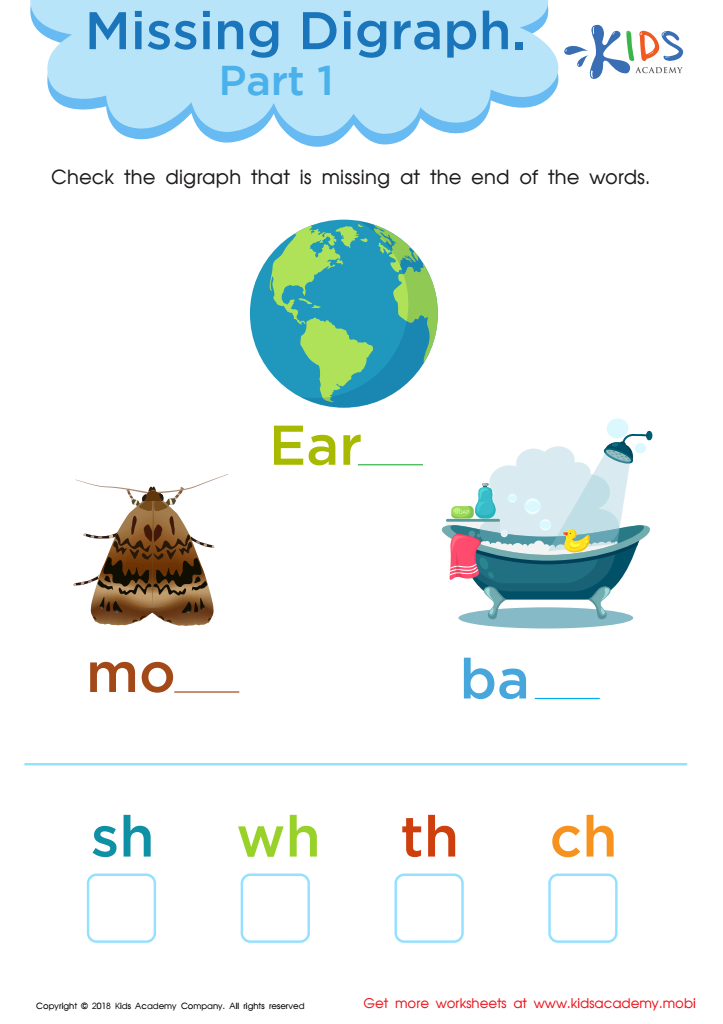

Missing Digraph: Part 1 Worksheet
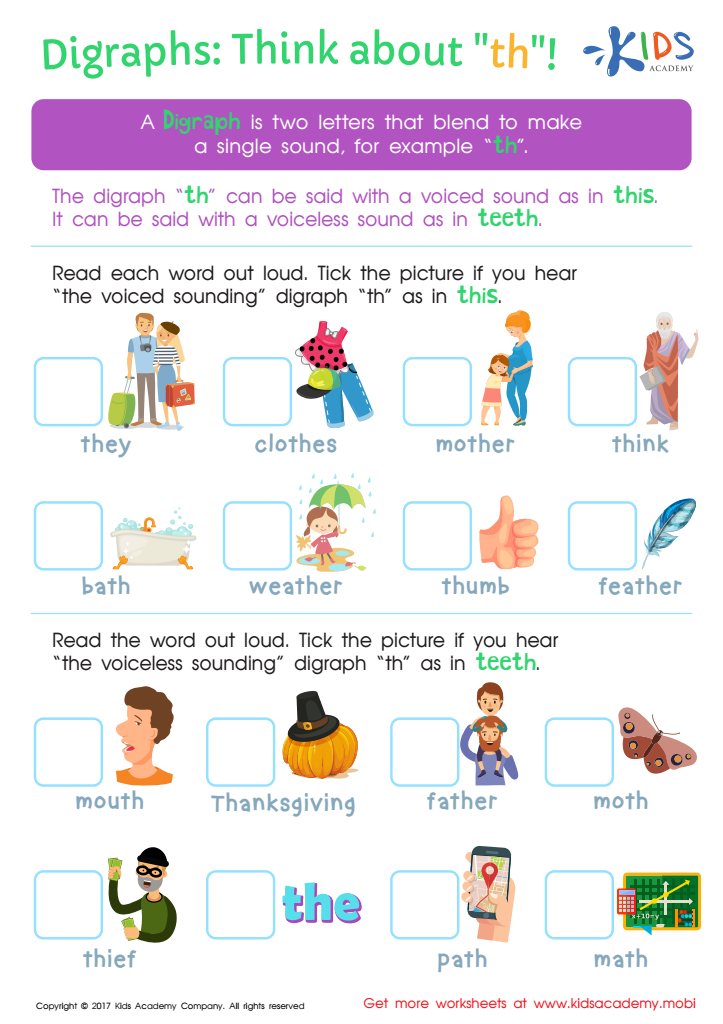

Digraphs: Think About "th" Worksheet
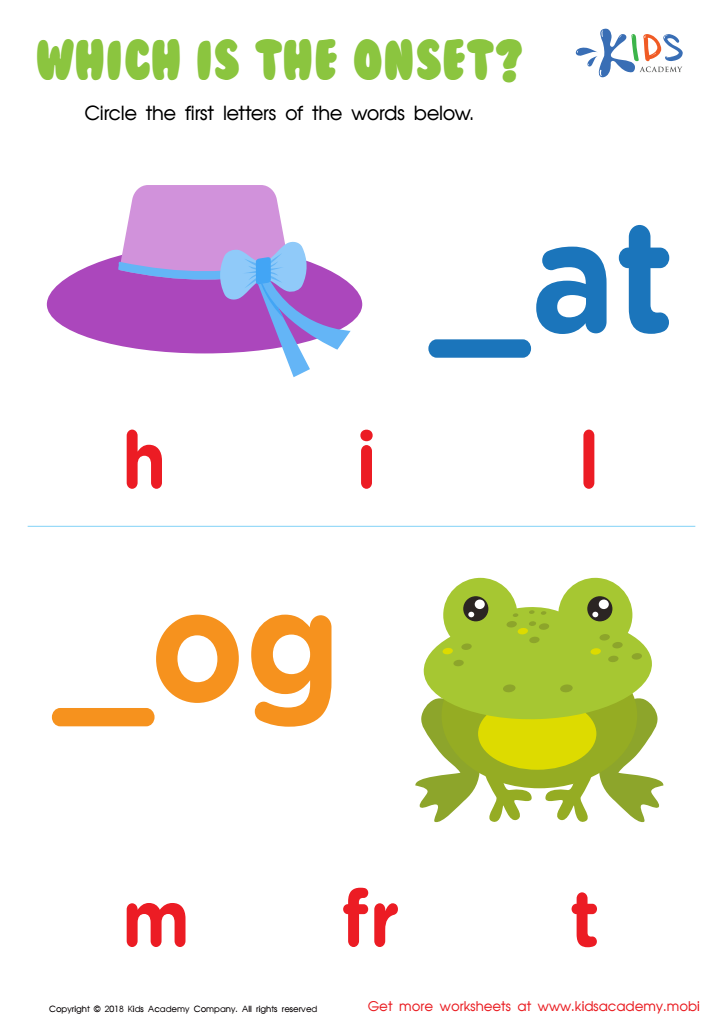

Which Is the Onset? Worksheet
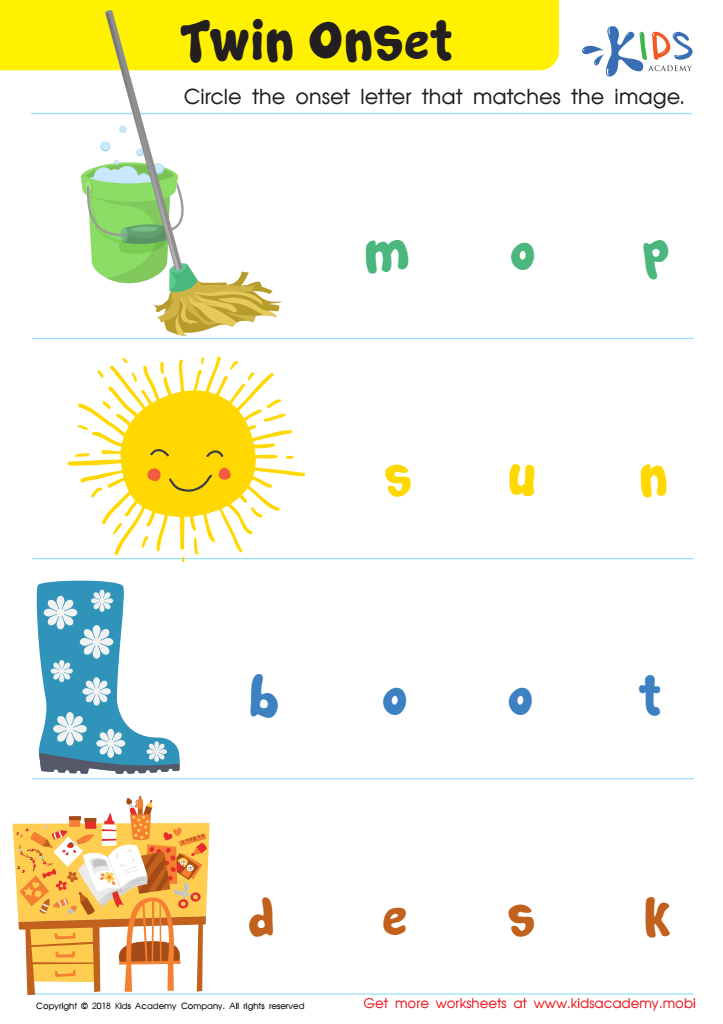

Twin Onset Worksheet
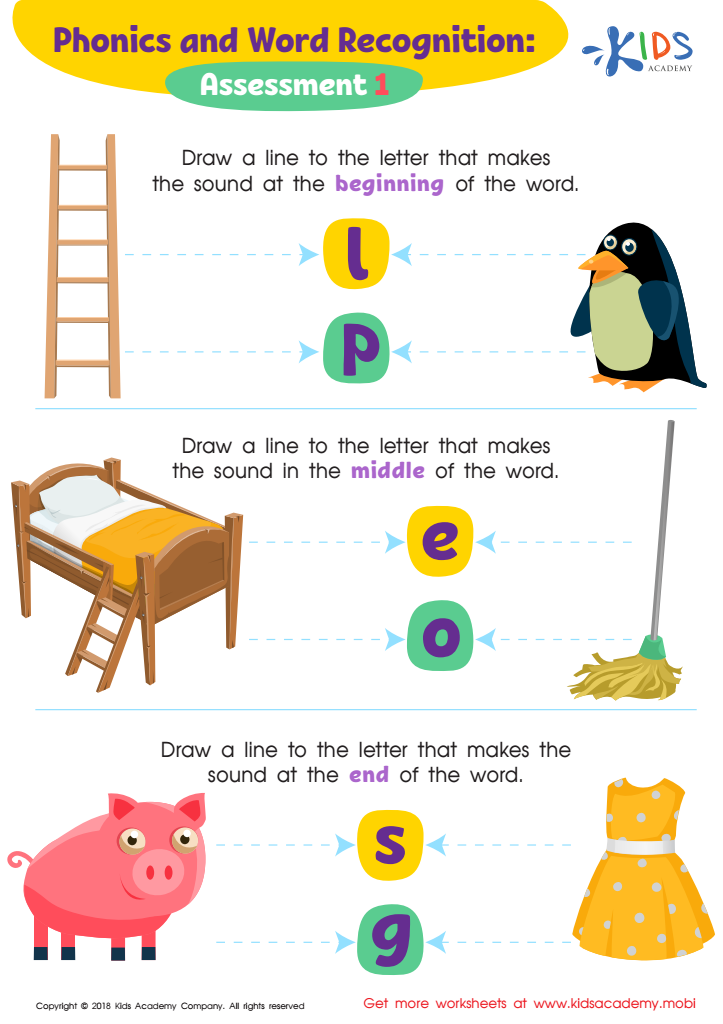

Phonics and Word Recognition: Assessment 1 ELA Worksheet
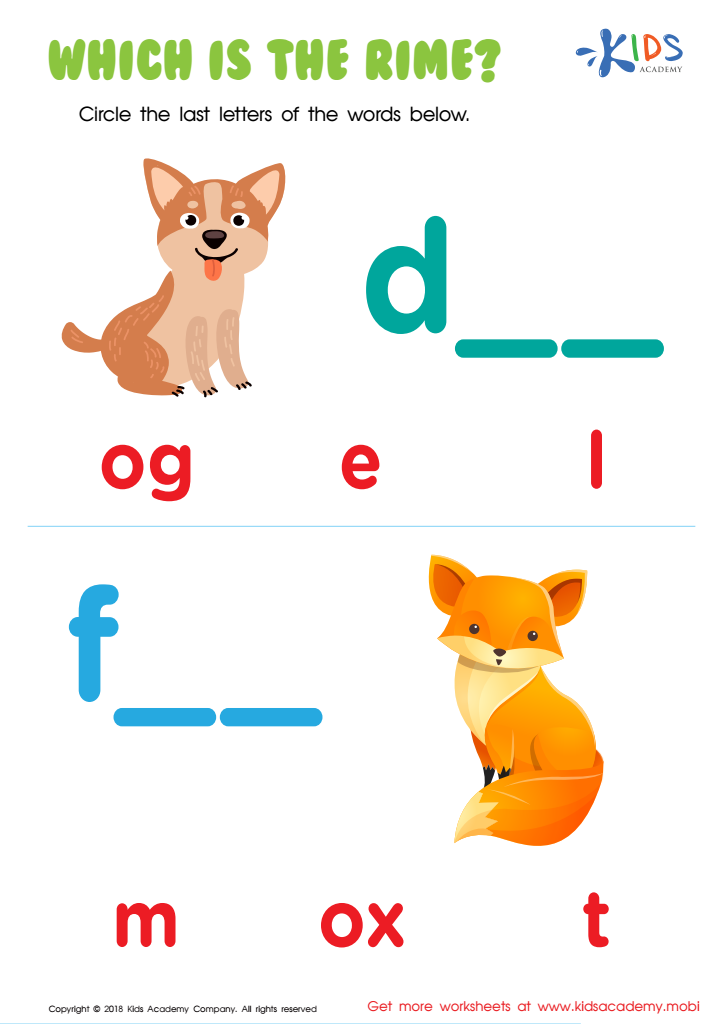

Which Is the Rime? Worksheet
Focusing on ending sounds in words is crucial for children aged 3-6 because it forms a fundamental part of their phonemic awareness, which is essential for learning to read and write. At this critical developmental stage, young minds are still grasping the complexities of language. By recognizing and understanding ending sounds, children enhance their ability to decode words, a skill that is integral to reading proficiency.
For parents and teachers, fostering an environment that emphasizes ending sounds supports a child's future academic success. When children can distinguish between different ending sounds, they are better equipped to recognize word patterns and spell correctly. This not only boosts their reading and writing skills but also builds their confidence and fosters a love for learning.
Interactive activities like rhyming games, sound-matching exercises, and storytelling enhance this understanding in an engaging way. For instance, identifying that "cat" and "bat" share the same ending sound 't' helps children see patterns in language. These foundational skills ease the transition to more complex literacy tasks they will encounter in school.
In summary, focusing on ending sounds for children aged 3-6 equips them with vital language skills that significantly influence their reading and writing abilities, laying down a strong foundation for their future learning journey.

 Assign to the classroom
Assign to the classroom




